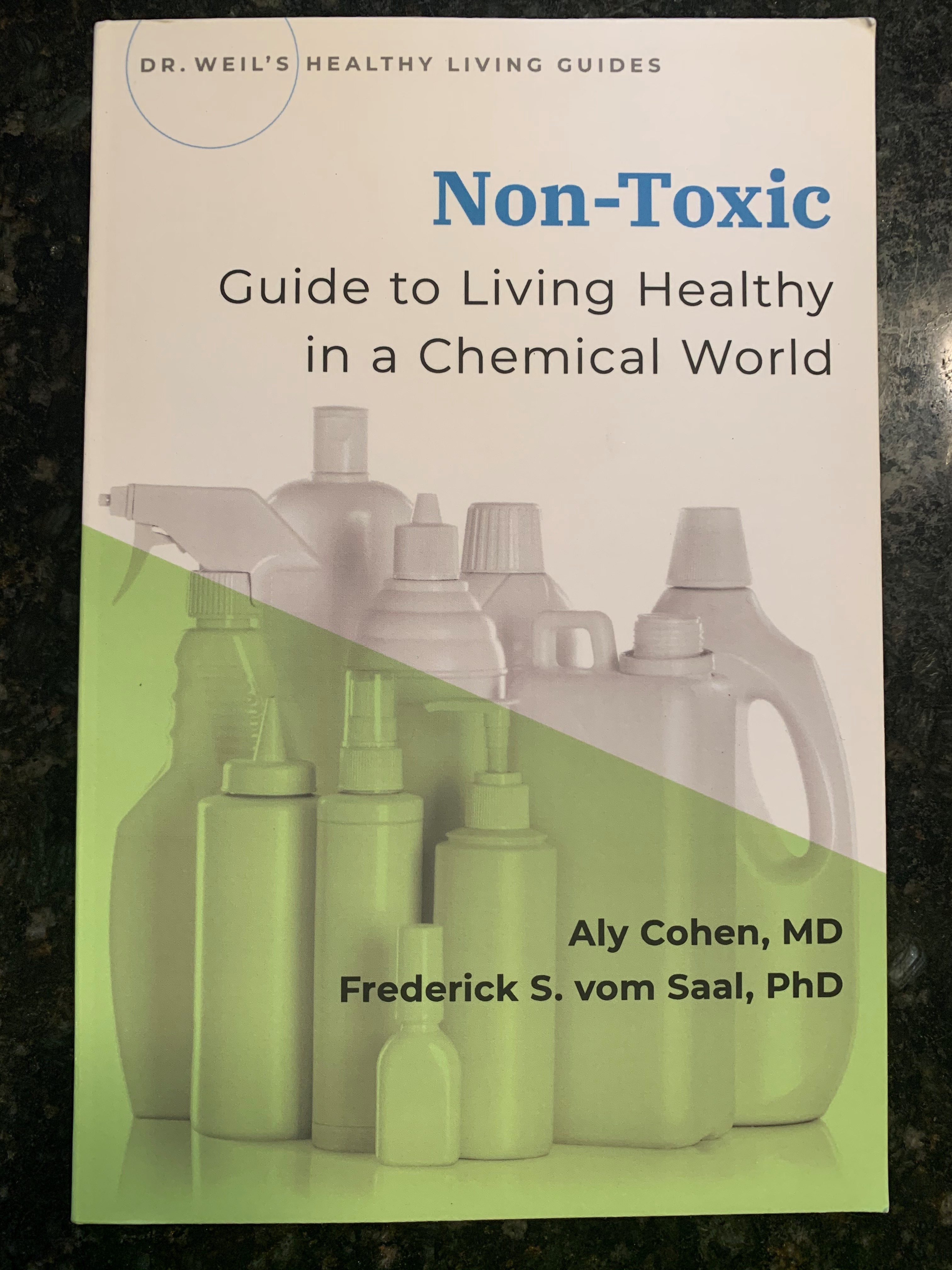Months-Long Lingering Of Toxic Chemicals From Ohio Train Derailment In Buildings

Table of Contents
Types of Toxic Chemicals and Their Persistence
The derailment released a cocktail of toxic chemicals, many of which persist in the environment and can accumulate in building materials. Understanding their properties and lingering effects is crucial for effective remediation.
Vinyl Chloride and its Lingering Effects
Vinyl chloride, a known carcinogen, is particularly concerning due to its volatility and ability to penetrate porous building materials.
- Slow Off-gassing: Vinyl chloride can slowly release from contaminated materials over months, even years, leading to prolonged exposure.
- Health Risks: Long-term, low-level exposure to vinyl chloride is linked to an increased risk of liver cancer, brain cancer, and other serious health problems. Acute exposure can cause dizziness, headaches, and respiratory issues.
- Building Material Absorption: Materials like drywall, insulation, and carpeting can absorb vinyl chloride, acting as reservoirs that slowly release the chemical into the air.
Other Persistent Chemicals
Beyond vinyl chloride, other hazardous chemicals released during the derailment pose long-term risks.
- Butyl Acrylate and Ethylhexyl Acrylate: These are acrylate monomers known for their irritant and potentially sensitizing properties. They can persist in dust and on surfaces within buildings.
- Bioaccumulation: Some chemicals may bioaccumulate in the local ecosystem, potentially affecting the food chain and further impacting human health through indirect exposure.
- Synergistic Effects: The combined exposure to multiple chemicals can create synergistic effects, meaning the overall health impact is greater than the sum of individual chemical effects. This complex interaction makes assessing the long-term risks even more challenging.
Health Impacts of Long-Term Exposure
The lingering presence of these toxic chemicals poses significant acute and chronic health risks to the community.
Acute and Chronic Health Effects
Exposure to these chemicals, even at low levels, can have severe consequences.
- Acute Symptoms: Immediate effects may include respiratory irritation, headaches, nausea, dizziness, and skin rashes.
- Chronic Health Problems: Long-term exposure can lead to more serious issues such as liver damage, neurological problems, reproductive issues, and an increased risk of various cancers.
- Diagnosis Challenges: The long latency period between exposure and the manifestation of chronic illnesses makes diagnosis and attribution difficult.
Vulnerable Populations
Certain populations are particularly vulnerable to the effects of these toxic chemicals.
- Children: Developing bodies are more susceptible to the harmful effects of toxic chemicals, potentially leading to developmental delays and increased disease risk later in life.
- Elderly and Immunocompromised: These groups have weaker immune systems and are more susceptible to developing severe illnesses from even low-level exposure.
- Targeted Protection: Special measures are needed to protect these vulnerable populations, including air filtration systems, relocation if necessary, and regular health monitoring.
Remediation and Mitigation Strategies
Effective remediation is crucial to mitigate the long-term health risks associated with this environmental disaster.
Testing and Assessment
Thorough testing is the first step in addressing the problem.
- Air Quality Monitoring: Continuous air quality monitoring is essential to assess the levels of toxic chemicals in affected buildings.
- Surface Sampling: Testing building materials for chemical absorption is crucial for determining the extent of contamination.
- Independent Testing: To ensure accuracy and transparency, independent testing by accredited laboratories is vital. Low-level concentrations require sophisticated testing methods.
Cleanup and Remediation Techniques
Several remediation techniques can be employed to remove or neutralize the contaminants.
- Air Scrubbing: Specialized air filtration systems can remove volatile organic compounds from the air.
- Specialized Cleaning: Professional cleaning using appropriate techniques and safety measures can remove surface contaminants.
- Demolition: In severely contaminated cases, demolition of buildings may be necessary, requiring careful and safe removal of hazardous materials.
- Waste Disposal: Proper disposal of contaminated materials is critical to prevent further environmental damage.
Legal and Regulatory Responses
Addressing the aftermath of this disaster requires strong legal and regulatory action.
Accountability and Legal Recourse
Those responsible for the derailment must be held accountable.
- Lawsuits: Affected residents have the right to pursue legal action to recover damages and ensure remediation efforts.
- Regulatory Oversight: Regulatory agencies need to oversee remediation efforts and ensure compliance with environmental regulations.
- Documentation: Careful documentation of damages, health effects, and remediation efforts is vital for legal cases and future prevention.
Regulatory Frameworks and Future Prevention
This disaster highlights the need for stronger safety regulations.
- Rail Safety Regulations: Stricter regulations are necessary to prevent similar incidents in the future.
- Environmental Monitoring: Proactive environmental monitoring and improved emergency response protocols are crucial.
- Improved Safety Standards: Investing in advanced safety technology and training for rail workers is paramount.
Conclusion
The lingering presence of toxic chemicals from the Ohio train derailment in buildings presents a significant and ongoing public health crisis. Addressing this issue demands immediate and comprehensive action, including thorough testing, effective remediation strategies, and strong regulatory oversight. Understanding the long-term health risks associated with exposure to these chemicals is crucial for protecting affected communities. The need for swift and decisive action to mitigate the effects of this environmental disaster cannot be overstated. We must demand accountability and implement preventative measures to ensure such a catastrophe is never repeated. The ongoing monitoring and remediation of lingering toxic chemicals from the Ohio train derailment are crucial for protecting public health and safety. Learn more about the long-term effects and the ongoing efforts to clean up the affected areas.

Featured Posts
-
 Planning Your Pei Easter Trip Check Business Hours For Sunday And Monday
Apr 23, 2025
Planning Your Pei Easter Trip Check Business Hours For Sunday And Monday
Apr 23, 2025 -
 Lab Owner Admits Guilt In Covid 19 Test Result Fraud Scheme
Apr 23, 2025
Lab Owner Admits Guilt In Covid 19 Test Result Fraud Scheme
Apr 23, 2025 -
 Boeing Completes 5 6 Billion Sale Of Jeppesen To Thoma Bravo
Apr 23, 2025
Boeing Completes 5 6 Billion Sale Of Jeppesen To Thoma Bravo
Apr 23, 2025 -
 350 Kata Kata Motivasi Hari Senin Semangat Baru Untuk Pekan Kerja
Apr 23, 2025
350 Kata Kata Motivasi Hari Senin Semangat Baru Untuk Pekan Kerja
Apr 23, 2025 -
 Attacco Ai Ristoranti Palestinesi 200 Manifestanti Chiedono Giustizia
Apr 23, 2025
Attacco Ai Ristoranti Palestinesi 200 Manifestanti Chiedono Giustizia
Apr 23, 2025
